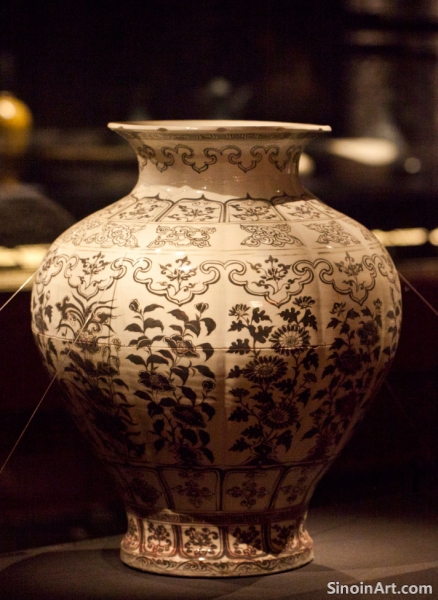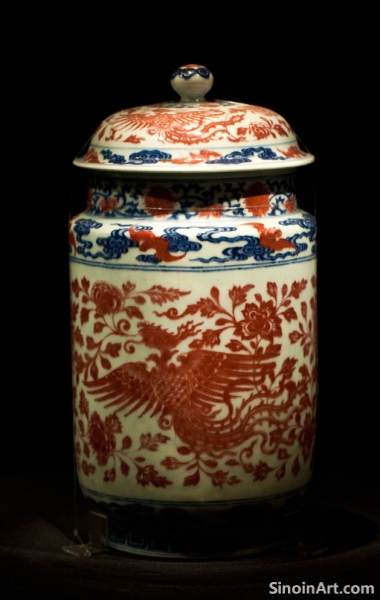Yuan Ceramics and the Influence of Islamic Art
|
The influence of Islamic art, particularly that of Persia, can be seen in some aspects of Yuan Dynasty ceramics, especially in the decorative motifs and use of certain colors, and the contact between different cultures via trade routes at this time is a key element in the overall design and appearance of some Yuan period ceramics.  The use of cobalt for blue and white porcelain is itself an influence of Persian trade, and the specific colourant was a key element of both Persian and Yuan era pottery production.  Certain types of floral patterns, geometric designs, and animal motifs seen on Yuan ceramics, while reinterpreted, also reflect the influence of Islamic artistic traditions. The integration of these motifs demonstrates the cross cultural exchange that was occurring at this time.  The influence of Islamic art on Yuan ceramics underscores the cultural exchange that occurred during this period, which demonstrates that styles and techniques travel across cultures and become integrated into existing forms of artistic expression. The blending of Chinese and Islamic styles in Yuan ceramics resulted in a unique synthesis of artistic traditions and demonstrates the overall interconnectedness of cultures during this period. |
Tag : Yuan Islamic influence, Chinese art, Persian pottery, cultural exchange, Silk Road art
Related information
- The Impact of Yuan Dynasty Porcelain on Islamic Ceramics
- The Influence of Yuan Dynasty Porcelain on Korean Ceramics
- Yuan Ceramics and the Continued Production of Celadon Wares
- The Social and Economic Context of Yuan Dynasty Porcelain Production
- Yuan Dynasty Porcelain and the Tea Ceremony: Utilitarian Objects of Beauty
This article explores the significant impact of Yuan Dynasty porcelain on Islamic ceramics, highlighting the adoption of underglaze blue techniques, large-scale forms, and the reinterpretation of Chinese designs within a local cultural context.
This article explores the influence of Yuan Dynasty porcelain on Korean ceramics, particularly in the adoption of blue and white styles, the adaptation of forms and decorative motifs, and the development of unique Korean ceramic traditions.
While blue and white porcelain rose to prominence, celadon wares continued to be produced during the Yuan Dynasty, though often with some modifications in style and technique from the Song Dynasty. These later examples of celadon ware demonstrate the continuing importance of this style, even with the arrival of new design trends.
This article explores the social and economic context of Yuan Dynasty porcelain production, examining the role of Mongol patronage, mass production techniques, and the importance of trade in the ceramic industry.
This article examines the practical use of Yuan Dynasty porcelain in the tea ceremony, exploring how its utilitarian nature combined with aesthetic appeal, providing insights into its function as a daily object and a cultural artifact.